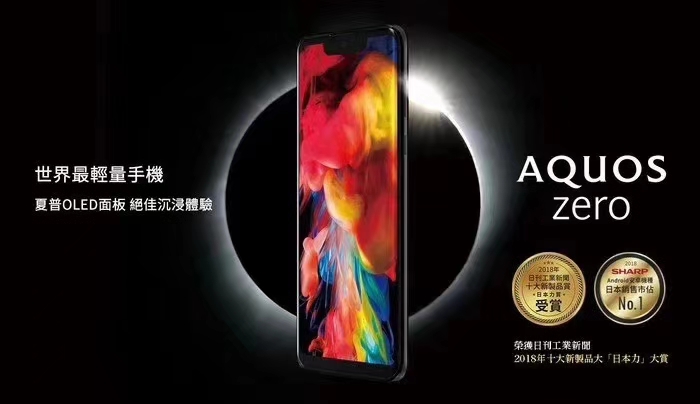Flexible OLEDs: introduction and market status - Page 18
Coca Cola is using flexible OLED lighting in its Star Wars Singapore promotion campaign
Coca Cola has embedded flexible OLED lighting panels in 8,000 bottles in Singapore, as part of a new Star Wars promotion campaign.
Each device also includes a small battery - enough for around 4,000 seconds of light. Inuru provided the OLED technology for this beautiful (if wasteful) application.
UBI: high demand for rigid OLEDs may result in conversion of flexible OLED lines to rigid ones
UBI Research posted an interesting note. The company says that rigid OLED shipments (237 million) command a 79.2% market share of the entire OLED smartphone market, up from 64.5% in 2018.

Display makers have mostly invested in flexible OLED production - but currently there is higher demand for the lower cost rigid OLEDs. All rigid OLED lines are currently in full capacity and UBI suggests that we may see some companies converting flexible OLED lines to rigid OLED production - or that we'll see new investments in rigid OLED production.
Sharp's 6.18" flexible AMOLED displays are now available on clearance at the OLED Marketplace
Sharp started producing flexible OLEDs in low volume in August 2018, and have adopted these displays in its own smartphones. According to reports Sharp understands it cannot compete with Korean and Chinese companies with both technology and price and has halted smartphone OLED production (although it still develops advanced OLED technologies and will continue to produce OLEDs for other applications).
We now offer Sharp's flexible OLED displays at the OLED marketplace, at a clearance sale. These are high-end 6.18" 1440x2992 flexible AMOLED displays with on-cell touch, and we have 15,000 such panels available at a great price. Check out more information over at the OLED Marketplace, or contact us now.
BOE sets ambitious OLED targets for 2020 - at least 70 million AMOLED panels
BOE held its annual Innovation Partner Conference in Beijing, and the company's chairman said that the company aims to produce at least 70 million flexible AMOLED panels. This is a sharp increase from what BOE estimated only last month.

BOE has been known to make aggressive targets - it first aimed to produce 30-50 million AMOLED panels in 2019, but eventually the number of panels in 2019 will be around 20 million.
Samsung starts constructing its A5 flexible OLED fab
In 2017 Samsung Display started to build its largest OLED production fab, the A5 fab in Asan. The fab was supposed to have a monthly capacity of 180,000 to 270,000 monthly substrates (Samsung's A3 line has a monthly capacity of 135,000 substrates).

Following lower demand for OLED panels and increased competition from China, Samsung stopped constructing the A5 fab, but a new report from Korea now suggests that Samsung is now starting to construct the A5 fab as demand for OLED displays is picking up.
BOE: we supply the foldable OLEDs to the Huawei Mate X and the Motorola Razr
BOE announced on its official Weibo channel that it supplies the foldable OLEDs to the Huawei Mate X and the Motorola Razr. We already know that BOE produces the 8" 2200x2480 foldable OLED used in the Mate X, but we did not know that BOE supplies the 6.2" 2142x876 foldable display used in the new Razr.

This is a bit of a surprise - as Motorola, on its official specs, says that the Razr uses a pOLED display which is an LGD brand.
Visionox demonstrates a beautiful rollable OLED prototype
China-based OLED producer Visionox demonstrated a beautiful rollable OLED prototype:
We don't have any information about the display, but the demo looks great - complete with a notch in the OLED (not clear if that's just part of the image displayed, though).
Will Samsung switch to flexible glass in future foldable OLEDs? Signs exclusive deal with Dowoo Insys
Samsung has reportedly signed an exclusive deal with Korea's Dowoo Insys to supply ultra-thin glass (UTG) to be adopted in future foldable OLED devices. As part of the deal, Samsung Ventures invested 12 billion Won ($10 million USD) in Dowoo, who will only be able to sell its glass to Samsung.

According to reports from Korea, Dowoo can currently produce around 500,000 UTG units per month - which should be enough to support Samsung's foldable OLED needs in 2020. With the new investment, Dowoo plans to increase its production capacity in the future. Dowoo's display glass is less than 100um thick - and can be made thinner up to 30 um.
Motorola announces the Razr 2019 clamshell foldable LGD AMOLED phone
Motorola announced the Razr 2019, a clamshell-style smartphone that features a 6.2" 2142x876 (21:9) foldable AMOLED display that folds inside. There's also a regular external 2.7" 600x800 AMOLED used when the phone is closed.

This seems, at least to me, to be a beautiful design which may appeal to more consumers compared to the larger foldable phones we have seen until today that open up to a tablet-style device. The Razr is also the cheapest foldable OLED phone yet announced at $1,500 (it will ship in January 2020).
Researchers develop a method to 3D Print transparent OLED displays
Researchers from Korea's Yonsei University has developed a 3D printing technique that can be used to deposit transparent OLED displays on any shape. The new technique 3D prints both the support structure and the 3D screen electronics.

The method is based in Digital Light Processing (DLP) system that prints the transparent plastic frames, and then uses an electrohydrodynamic jet (e-jet) printer to create the OLED layers as seen in the image above.
Pagination
- Previous page
- Page 18
- Next page




